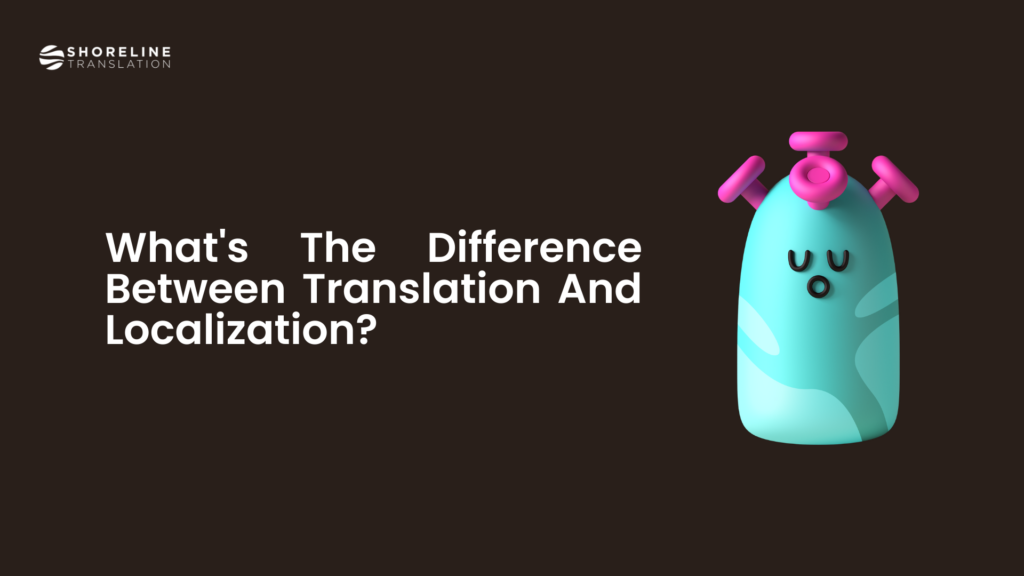Nowadays, you can find several translation services that cater to individual and corporate clients across various industries like educational institutions, Business, and legal services. However, these agencies have to cater to each customer’s unique request, especially in the international market. That’s because no two translation tasks are the same.
Thanks to the uniqueness of each translation, a translation agency might have to include some localization techniques for the best results. Such a method ensures that the translated content perfectly suits the client’s intention.
But what’s localization? More importantly, how does it differ from translation? It’s important for translation services to make the distinction, as both terms can work interchangeably. Below are some of the crucial details you must note.
Table of Contents
ToggleDubai Translation Services: What is Translation?
A typical translation company needs to understand the definition of translation as a service. It involves converting a block of text from one language to another to convey an equivalent meaning. The translation process is highly handy for any language translation services catering to other language speakers.
Examples of materials that can get translated include legal documents, training manuals, web content, and creative write-ups. That’s why top translation services combine interpreter services with website translation, as they all require text conversion.
Also, for most translation agencies, the entire goal of translation is to keep the original context, rather than a mere word-for-word conversion from one language to the other. That’s why even the best translation company will try to handle much of the translation manually to give the finished product the “human touch” it needs.
What is Localization?
You can view localization as the translation, but with additional steps. It is similar to editing services, as it takes a translated text and makes it as culturally accurate to the translated language as possible.
It’s similar in that regard to interpreting services. For instance, some Dubai translation services may have the original text translated to Arabic. While there are Arabic translation services in Dubai and Abu Dhabi, localization is necessary at every step.
That’s because localization allows translation offices to properly adjust the translation to suit readers in Dubai or any other Arabic-speaking region. As a result, the technique can assist you in delivering quality translation services each time.
Expectedly, a typical localization would require more steps than a simple translation. The operator must account for context-specific spellings, expressions, and references in the material as it gets translated into another language.
Professional Translation Services: Translation Vs. Localization
Translation and localization are similar concepts that often go hand-in-hand. That’s especially true for professional Arabic translation services in Dubai. Below are the main differences between both terms, aiming to educate you on making the distinction where necessary:
1. Continuity Differences
Right out the bat, the main difference between translation and localization is that they have different timelines. Localization goes further than translation and would require more time and resource overall.
Generally, a professional translation company will consider translation the starting point for localization since the latter rounds it up for a high-quality translation.
2. Technique Requirements
Localization requires much more technique than a regular translation process. For one thing, translation services can only translate a text with a computer program or get expert translators to do it. However, a lot more resources are necessary when you need to localize the same document.
Most translation services would need a more experienced team for a localization task. Depending on the technical terms, any leading translation agency may need to call in someone with technical expertise on the industry-related words in the text.
3. Media Changes
Translation stops at textual conversions, where localization may include images and other media, depending on the client’s needs. For example, Abu Dhabi translation services may have promotional content to translate to another language. If the original text included images, the translator has to replace them when translating into another language. That way, the localization can be successful.
The same would be true for videos and sound recordings in the document, as the case may be. For instance, an image in an English text may be only popular with an English-speaking audience. If you were to translate the document to Arabic, you may have to modify the picture so the Arabic translation would be more understandable.
4. Layout and Formatting
Localization won’t stop at text conversion like a translation would. Even for a certified translation company, localization will take the time to ensure that the document has the right layout and formatting before it’s successfully localized.
The main reason is that different languages have unique formatting styles. For instance, English translation formats go from left to right, while Arabic uses the right-to-left style. A simple translation won’t take that into account. But the localization process ensures that the correct format gets used once the text transitions to the other language.
How about font and type? Localization considers those as well, given that languages may differ on that level. The source language may use Roman scripts (as is the case with English), while the translated language uses non-roman ones.
Even when both languages use Roman scripts, they may not have the same vocabulary count. An example is French, using 30% fewer words on the exact phrase as English. Other languages like Finnish use about 40% less than English for the same text. Localization ensures that this discrepancy gets smoothed out in the final translation.
5. Other points to Note
While translation services can identify differences between localization and translation, it’s best to see the latter as a subset of the former. In the real sense, translation is only an aspect of localization. A translation company still keeps the original intent and context when translating and would have to localize to make the material useful to anyone reading it in the translated language.
Wrapping Up
If you own or work in a translation agency, you may realize how important it is to have the translated text suit the client’s intentions. It means they have to be able to comprehend the document as naturally as it was in the original language.
As such, translation services must distinguish between translating the text and localizing it. We’ve highlighted the major differences above, and you can use the information to improve your entire translation and localization services.


